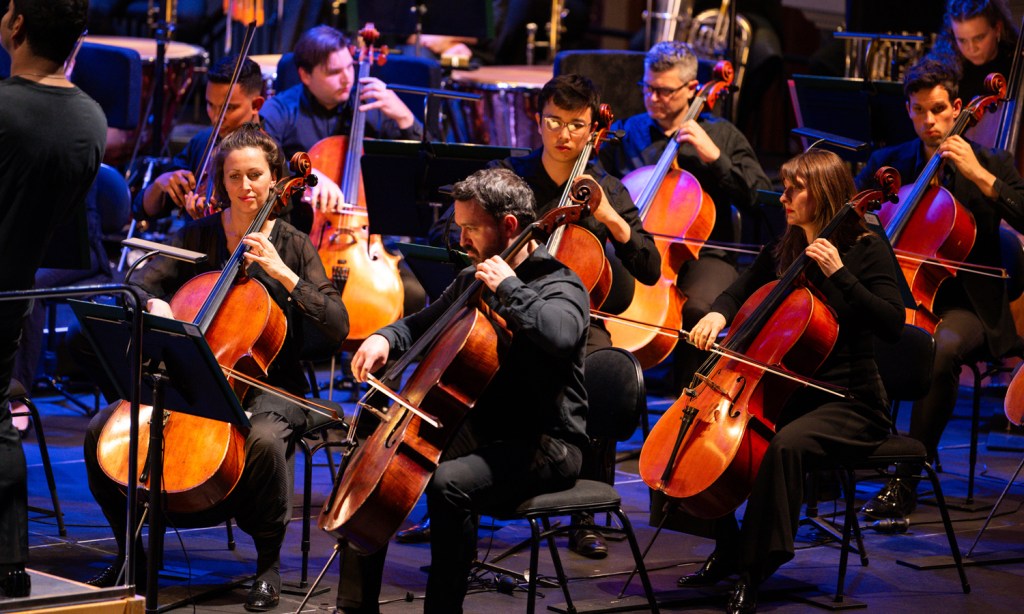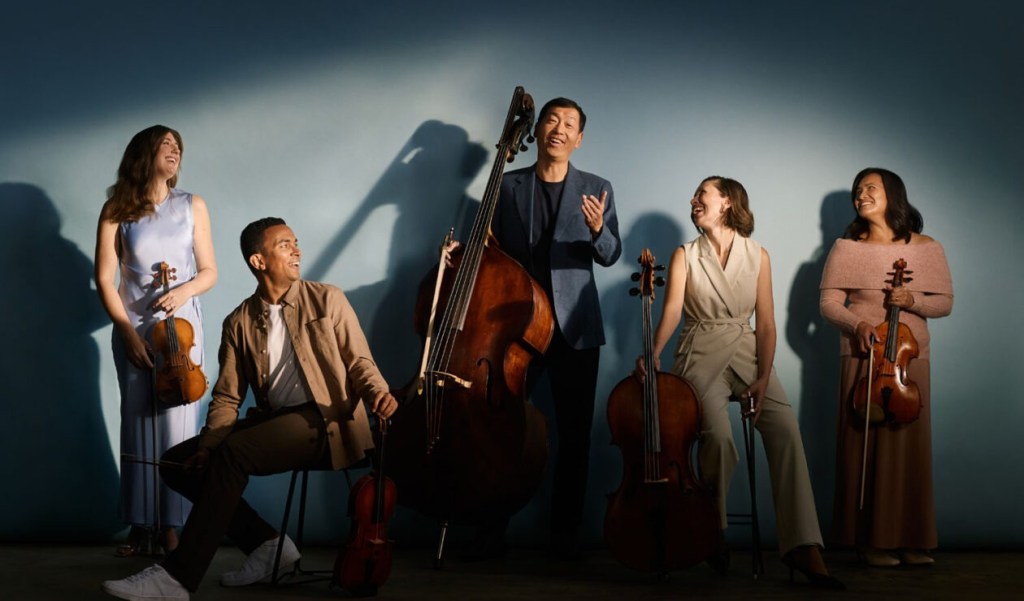Music review: ASO’s Reverie
There was little time for actual reverie in this concert, which featured the premiere of Adelaide composer Graeme Koehne’s emotionally complex Bittersweet Symphony and a performance by dynamic French pianist Jean-Efflam Bavouzet.

He’s been silent during the last few years, so it was interesting to hear a new work by Graeme Koehne. His Bittersweet Symphony is an Adelaide Symphony Orchestra Commission, and revealed itself as a smart, sleek and impressive score – his most polished to date.
This Adelaide composer made waves in the 1990s and early 2000s by realigning orchestral music towards popular “lowbrow” styles: cartoon music in “Powerhouse”, film music in his oboe concerto “In-Flight Entertainment”, and jazz in the trumpet concerto “High Art”.
It was controversial at the time, and it was fun. But Koehne’s compositions also had a serious point to them, plus a certain undeniable validity: classical music was badly in need of updating itself.
Here he is doing it again, but with a noticeable difference. Bittersweet Symphony takes its name from an angsty, string-backed song, “Bitter Sweet Symphony”, by the British alternative-rock group The Verve. Koehne refrains from using any of its material, but he does maintain its essential idea, where life’s banality dictates that nothing is one-dimensional. Opposites co-exist everywhere. Contradiction is all around us.
In usual Koehne fashion, Bittersweet Symphony declares itself with self-effacing transparency. An energised beat propels this work like a constant pop rhythm, and its kinship with film music shows in its lustrous string textures and elating, Hollywood-style brass scoring. Yet soon one becomes aware that this symphony is entirely based around one interval, a falling minor third occurring in pairs. Reappearing in each section of the orchestra, it carries tinges of melancholic sadness.
You might like
Bittersweet Symphony’s middle section opened up a magical sheen of violins, harp, glockenspiel and plucked bass against the same pulsing rhythm. It was beautiful. Quizzically, this piece was neither one thing or another, but both. Koehne has introduced greater complexity into this composition – complexity not in the formalistic sense but in its emotional layering – and he has hit a new sweet spot by doing so.
Guest conductor Alpesh Chauhan guided the ASO in a squeaky clean premiere performance. We’ve heard this British conductor before, in Shostakovich’s Tenth Symphony in 2022, and he’s thoroughly capable and magnetic to watch.
It takes a special pianist to play Ravel. So often, this composer seems to make an art out of frivolity: he tempts the listener into looking in the wrong direction by pure charm. Jean-Efflam Bavouzet is that special pianist and an absolute dynamo.
He played the Concerto for Piano in G with marionette-like humour, jumping from one idea without connection. In a way, Ravel is the perfect cartoon music composer – though he didn’t write any. The last thing he needs is ironing out all the fun and turning him into a “serious composer”.
Subscribe for updates
With Bavouzet, all was wonderfully showy, facile and magical. Ravel’s jazz harmonies and blue notes sounded deliciously “wrong”, and his rhythms bright and snappy.
Ravel needs a deft touch from the orchestra as well. His orchestration is unusually thin and light, exposing each instrument to an extreme, so timing has to be impeccable. Switching to chamber orchestra mode, which they do so excellently, the ASO didn’t put a foot wrong. Chauhan kept tight reins while maintaining an atmosphere of carefree abandon.
What a scintillating performance this was.
With its off-beat humour, there was a streak of madness running through this Reverie program. But there wasn’t much time for actual reverie. It was all go.
Berlioz’s Symphonie fantastique plunges us into the hallucinatory visions of a drug-taking young artist. Dreaming he has murdered his lady friend, he then witnesses his own execution. In truth, this work’s music far exceeds the groaning story that Berlioz wrote to accompany it. Even so, his specific instruction was that the two-page story be distributed to the audience “as it is indispensable for a complete understanding of the dramatic plan of the work”.
Evidently the ASO didn’t feel it needed to do this, but it might remember next time.
Even so, there was a ton of enjoyment in this performance. Chauhan’s picture of “Symphonie fantastique” was youthful and full of verve. If all goes right in this work; one is never too sure whether it steers more to pathos or melodrama, and that is exactly how it felt.
Some of the symphony’s quieter stretches were a little drifty and featureless, including the long introduction. But when the drama took off, it was rocket-fuelled. The ASO’s playing was pin-sharp. Off-stage bells at the end in the “Witches’ Sabbath” were a highlight, and perfectly in time – a hard thing to do with such large chunks of metal. Apparently, the two bells were shipped in from Sydney especially for this concert.
Good programming and thoroughly committed playing made this one of the year’s most successful orchestral concerts.
This is a review of Adelaide Symphony Orchestra’s Reverie concert at the Adelaide Town Hall on October 25. The final concert in its Symphony Series, Titan, is on November 29-30.

